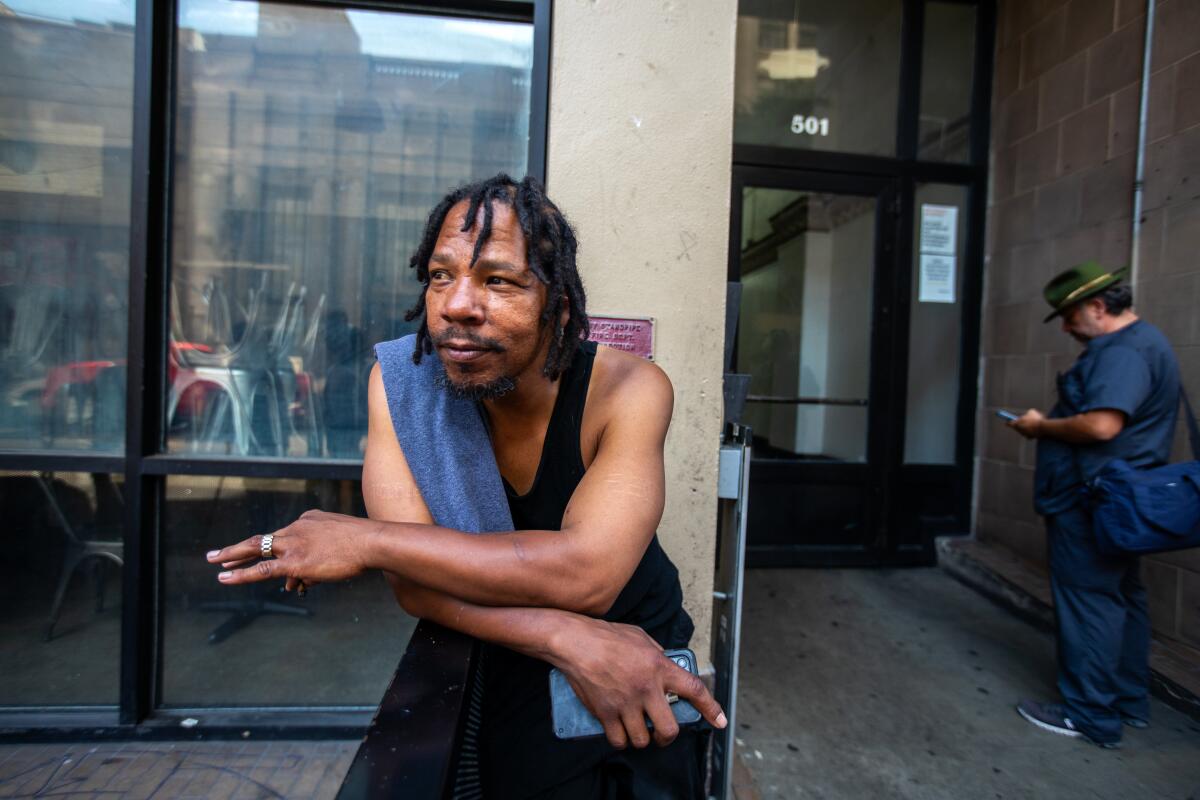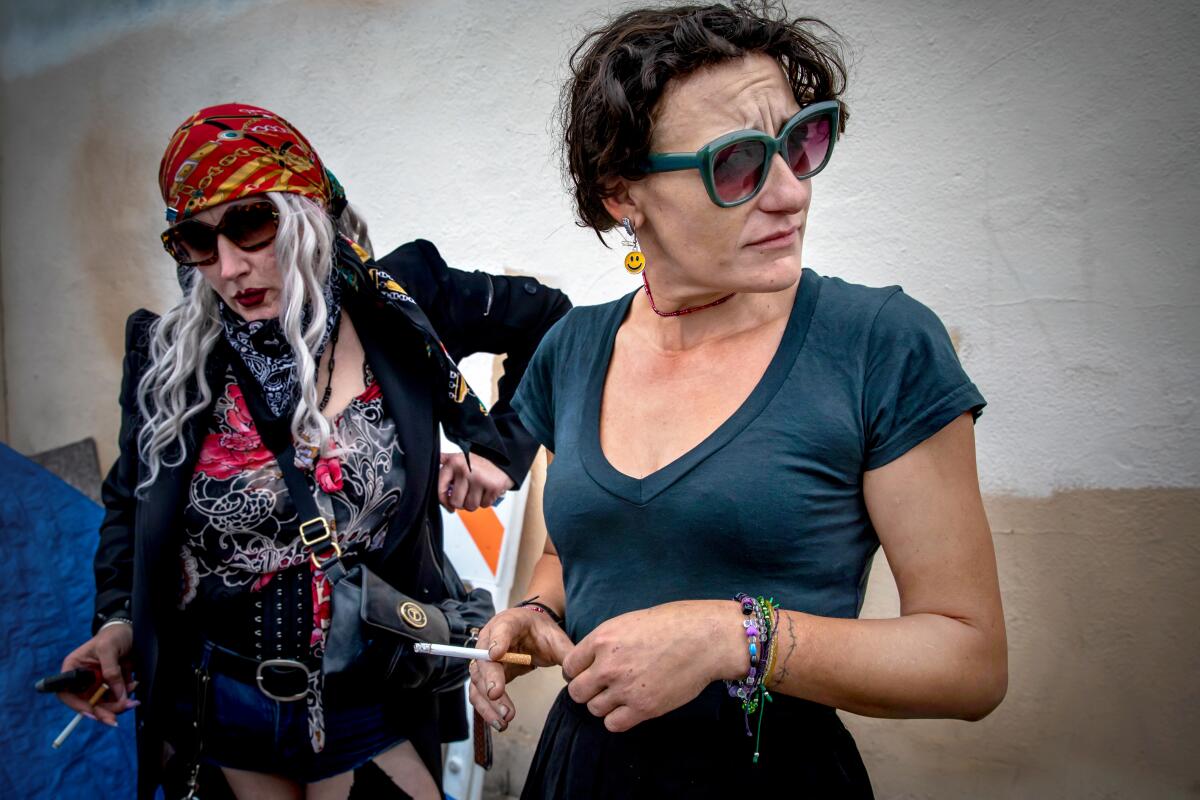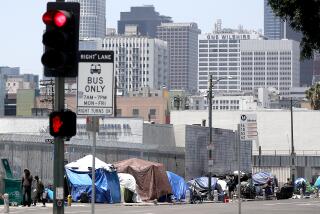Fentanyl blamed for surge in overdose deaths in and around Skid Row, according to new data

- Share via
Fentanyl is being blamed for a surge of overdose deaths on and around Skid Row in downtown Los Angeles over the last five years, with Black men making up the majority of the victims.
Overdoses shot up dramatically in ZIP Codes encompassing Skid Row, to 148 in 2022 from 13 in 2017, with fentanyl accounting for more than 70% of the deaths, according to data the Los Angeles County Medical Examiner-Coroner
shared with service providers.
“These are not just numbers and statistics, these are friends, family and loved ones,” said Charles Porter, the prevention coordinator at United Coalition East Prevention Project, which provides outreach services on Skid Row. “We must stop the rise in overdose deaths and cannot tolerate another loss.”
Of 140 fatal overdoses from January through November of 2022, 83 of those who died were Black people, according to the group’s data. That is 59% of the deaths.
Men made up 76% of the victims.
“People tend to die 10, 20, 30-plus years younger just because of the experience of Skid Row,” said Skid Row resident Suzette Shaw, who stressed the disproportionate impact of overdose deaths on Black people. “Our people are living and dying out here on our streets.”

Over an 11-month-period in 2022, nine people died of drug overdoses at the Alexandria, a 463-unit building that once served as a luxury hotel during the Roaring ‘20s but is now used for supportive housing. The historic structure, according to county data, is one of several buildings that has seen an increase in drug overdose deaths related to fentanyl, a synthetic opioid.
Fentanyl was implicated in 58% of deadly overdoses among unhoused people in L.A. County in 2021 — nearly three times the percentage in 2019.
On the streets, users say, fentanyl is more expensive than meth. It is so potent that even a trace amount in a pipe or several puffs of secondhand smoke can make someone pass out or become extremely ill, especially if they’ve never taken the drug before.
Standing outside of the Alexandria earlier this week, resident Mordean Holmes, 31, said paramedics regularly visit the building. She said she’s seen four or five body bags removed from the building since she moved there in March.
“This building is crazy,” she said. “There’s all kinds of deaths happening here, overdoses too.”
More to Read
Sign up for Essential California
The most important California stories and recommendations in your inbox every morning.
You may occasionally receive promotional content from the Los Angeles Times.












